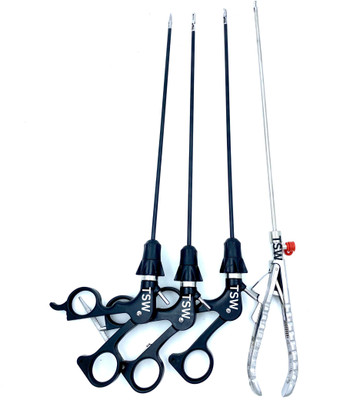tsw Laparoscopic Grasping Forceps, Scissor & Needle Holder 5mm Surgery Instruments Medical Equipment Combo
Quick Overview
Product Price Comparison
Laparoscopic Grasping Forceps, Scissor & Needle Holder 5mm Surgery Instruments Medical Equipment ComboThe Laparoscopic Maryland Curved Scissor Bowel Grasper and Needle Holder are three separate surgical instruments commonly used in laparoscopic surgery. Here is a brief overview of their individual uses:1. Curved Scissor: The Maryland Curved Scissor is a laparoscopic scissor with a curved blade. It is used for dissection and cutting of tissue, especially in confined spaces where a straight scissor may not be able to reach. It is commonly used in gynecological, urological, and general surgical procedures.2.Bowel Grasper: The Bowel Grasper is a laparoscopic instrument with two opposing grasping jaws that are used to grasp and manipulate tissue. It is commonly used for grasping and retracting the bowel during colorectal surgeries and other abdominal procedures.3Needle Holder: The Needle Holder is a laparoscopic instrument that is used to hold and manipulate needles during suturing procedures. It is designed to securely grasp the needle, which allows the surgeon to suture with greater precision and accuracy.4.Maryland Grasper:- This is the most commonly used dissecting forceps in laparoscopic surgery. Usually known as a Maryland, some surgeons call it a Crile. It has a fine tip for grabbing a small bit of peritoneum, but a relatively long length allowing it to spread very wide when used for blunt dissection.When used together, these instruments can help facilitate a wide range of laparoscopic procedures, including colorectal surgery, urological surgery, and general surgical procedures. The 5mm size of these instruments allows for minimally invasive surgery, which can result in less pain and scarring for the patient. It is important to note that the specific uses of these instruments may vary depending on the surgeon's preferences and the specific surgical procedure being performed.


